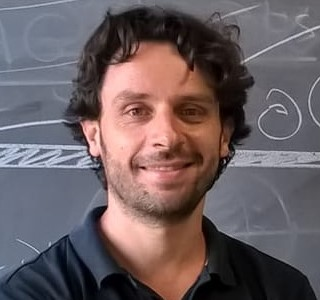Nowadays, the great power of modern computers combined with well-designed numerical models allows to develop computational models able to deal with simulations of several coupled phenomena over detailed complex topography. An efficient and properly calibrated computational model represents a useful tool to provide insight into the catchment dynamics at hydrological and geomorphological levels. In addition, it allows to develop detailed risk management and conservation plans.
The challenge of finding a compromise between computational time and level of accuracy and robustness has traditionally expanded the use simplified models rather than full two-dimensional (2D) models for flood simulation. This work presents a GPU accelerated 2D shallow water model for the simulation of flood events in real time. In particular, an explicit first-order finite volume scheme is detailed to control the numerical instabilities that are likely to appear when used in complex topography. The model is applied to reproduce real events in a reach of the Ebro River (Spain) in order to compare simulation results with field data in a large domain and long flood duration allowing an analysis of the performance and speed-up achieved by different GPU devices. The high values of fit between observed and simulated results as well as the computational times achieved are encouraging to propose the use of the model as forecasting system.
Morphodynamic transient flows require numerical models that incorporate complex physical relationships. Moreover, the lack of measured data set (either in field or in laboratories) with enough accuracy, precision and resolution, which allow proper calibration and validation of the numerical models, presents an additional drawback. Recent advances in the simulation of shallow flows over mobile bed have shown that accurate and stable results in realistic problems can be provided if an appropriate coupling between the 2D shallow water equations (SWE), the suspended solid load transport equation and the Exner equation is performed. In this way the computational cost may become unaffordable in situations involving large time and space scales. Therefore, for the numerical efficiency recovering, the coupling technique is simplified, not decreasing the number of waves involved in the Riemann problem but simplifying their definitions. Furthermore, special attention has to be paid to limit the time step size of the system in order to avoid numerical instabilities, while computational cost remains suitable. The simplified model is formulated under a general framework able to insert any desirable discharge solid bedload formula. The effects of the approximations made are tested against experimental data which include transient problems over erodible bed in laboratory experiments and realistic rivers. The main issue is the high computational effort required for obtaining accurate numerical solutions due to the high number of cells involved. However, recent advances in massive parallelization techniques for 2D hydraulic models are able to reduce computer times by orders of magnitude making 2D applications competitive and practical for operational flood prediction in large river reaches. In particular, high performance code development can take advantage of general purpose and inexpensive Graphical Processing Units (GPU), allowing to run 2D simulations more than 600 times faster than old generation 2D codes, in some cases.


.jpg)




